San Francisco was the scene, and Burgundy was once again the topic of conversation amongst thousands of glasses throughout the week, as Daniel Johnnes, founder of La Paulee and wine director of the Restaurant Daniel empire, held court with more than a few of his favorite Burgundian vignerons. I fell short of my goal of tasting 100 wines, although when I say tasting, I should say drinking. I believe 98 was the final number achieved, although please feel free to check my math by the end of the three articles that this ends up becoming.
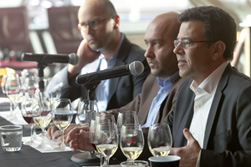
Host Extraordinaire Daniel Johnnes with a Pair of Rajs
I arrived Thursday evening just in time to join the welcoming wagon manufactured by none other than Wilf Jaeger and Mr. Big, another long-time San Francisco wine icon. It was definitely a case of good timing. A magnum of 1961 Billecart-SalmonNicolas Francois signaled safe waters with its full-bodied, big and bready style. It was super toasty and very fresh, possessing nice citrus touches and a long, stylish finish (94M).
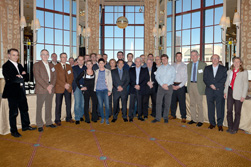
Burgundy All-Stars
A 1969 Leroy Montrachet was also excellent with its great old nose of candle wax and butter toffee, along with this old cabinet/attic/house aroma and ‘spearmint.’ There were both great earth and sautéed butter flavors. This was a tasty and impressive aged white, and TD Jon noted ‘salted caramel’ (94).
2003 is a controversial vintage when it comes to Burgundy, and a 2003 Ramonet Montrachet showed why. The super hot vintage made the usually divine Montrachet overly sweet in a tropical, mint julep cocktail kind of way. This was the stripper side of Montrachet, but my cash stayed in my pocket after the lovely Leroy. They were such opposites. Fruity and forward, there was nice body here to this extroverted Monty (90).
A 2004 Henri Boillot Chevalier Montrachet was smooth, but it didn’t entice too many notes (91).
Twin Bonneau Corton Charlemagnes proceeded, led by a funky 1980. It had an old, mildewy nose and did not seem like a perfect bottle, perhaps corked. It was weird, and its fruit felt like it was left out in sun over the weekend (82A).The 1985 had a similar personality but on the right side of the bed. Yeast, old corn and caramel were all present in its classic profile, along with benevolent waterfall flavors (93).
A magnum of 2002 Ramonet Bienvenues Batard Montrachet had a great spearmint, smoke and waterfall nose. Its palate was long, lingering and stylish. Ramonet’s Bienvenues and the vineyard in general remains one of white Burgundy’s best values (94M).
A 1985 Raveneau Chablis Montee de Tonnerre brought to my wine vocabulary some words I had never used before in describing a wine – urinal cake, and it wasn’t a positive. Alexander the Great concurred with ‘bathroom,’ while someone else noted ‘reduced and sulfur.’ This was clearly an affected bottle; how exactly, I am not sure, but it was wild and woolly with weird and peculiar flavors, tough to drink overall (DQ).
A 1998 Ramonet Montrachet was in a great spot with its decadent nut and smoke aromas, along with forest, fingerling potato skin and heavy cream that came across lightly. The palate was pure with lots of crystallized fruit and minerals, good wood, great freshness and lots of secondary nuances. Now seems the right time to be drinking this (94).
There were two whites to go for now, and they were both Coches, beginning with a ‘wow’ (of course) 1999 Coche-Dury Corton Charlemagne. Aromas of super-kernel and mint came across in this full-bodied, deep and dangerous white. There was great citricity here, along with supporting smokehouse playing its part perfectly. This was a full-bodied and powerful Coche, full of smoky flavors and that signature Coche kink (95).
The 2001 Coche-Dury Corton Charlemagne was similar yet more exotic, showcasing more coconut and more of its kinky side. This was another stellar Coche, though more ‘ripe ‘n roll,’ as I put it (95).
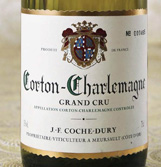
That Signature Coche Kink
The reds eased into the rotation with a couple of 2009s, beginning with a smooth, easy and tender 2009 Liger-Belair Vosne Romanee Les Chaumees (91).
A 2009 Dujac Romanee St. Vivant had ‘wow’ concentration in its nose; this was sexy juice at first smell. Its fruit was dripping with oil, displaying purple and black tones with exotic spices, dates and nuts in tow. The palate was smooth, satiny and beautiful, but both 2009s gave me the impression they need a bit of time to settle in the bottle and blossom again, even though the early indicators are this vintage will be an immediate pleasure giver (95).
The 2000 Dujac Clos St. Denis had a stinky nose, aromatic in a pungent, wild and gamy way. It came across lighter in style, but dark rose held it together. There were nice tobacco flavors without the heat. This is both a wine and a vintage that should be drunk up sooner as opposed to much later. Let me supplement that by saying I just don’t think this wine will ever give more pleasure than now. I could add another supplement, but there are just too many damn wines to write up (92).
The 1991 D’Angerville Volnay Clos des Ducs was unfortunately a bit corked; were it not, this felt like it could have been a 95-point surprise of a wine. Its finish was thick and great; this was surely a Volnay impostor! Its fruit was mildewy and its flavors skewed accordingly, so it was tough to evaluate this wine despite the more than impressive body and finish (93A).
A 1961 DRC (Marey-Monge) Romanee St. Vivant was instantly crowned ‘wine of the night’ by one, and its smoky, mature nose seduced with mesquite, earth, bread, chocolate and ‘soy’ aromas. The palate was meaty and gamy with a hint of tropical fruit in this excellent red (93).
A magnum of 2002 DRC Romanee St. Vivant had great spice, power and character. Mint, menthol, leather and tar combined in outstanding fashion. I should note this was more impressive out of magnum, slightly but noticeably, than a bottle I had a month later in New York. Magnums can be better, but every bottle is different anyway (95+M).

Aubert de Villaine of DRC
A 1998 Clos de Tart had a touch of catbox in the nose, with some rose and t ‘n a blending in. There were vitamin flavors in this solid red (91).
A 1990 de Montille Pommard Rugiens was bready and earthy, possessing aromas and flavors of black rose, rainwater and cereal that was a touch old (88).
Another ’90 followed, this one being the 1990 Roty Griottes Chambertin. Fresh wet rocks and waterfall were the first things noticeable, followed by cigar. Its flavors felt a bit dirty, and its fruit was a touch sour (89).
I quickly recalibrated with some superb whites thanks to Mr. Big. We eased back in with a 1991 Coche-Dury Corton Charlemagne. 1991 is more known for its reds than its whites, and this mature Coche was gamy and yeasty accordingly. Still tasty, there were lots of wheat flavors in this lovely, mature Coche. Its maturity was a good thing, but this was another wine that was ready to go, even a bit beyond that, I suppose (92).
The 1990 Coche-Dury Corton Charlemagne that followed said, ‘I am older, and I am better, too.’ Being a first born, I completely understood. While the ’90 hinted at some of the style and flavors of the 1991, this was fresher and stronger, by a longshot. Its acidity roared, and I licked my lips like a well-fed lion after each sip. I wish I could read this last phrase I wrote, looks like ‘like a degending on.’ The unreadable notes are always the deepest of thoughts :). The 1990 was wine #22 for the record (96).
This soon became a heavyweight battle officially when a glass of 1990 DRC Montrachet was handed to me next. One remarked of the 1990s, ‘They’re there, why wait?’ The DRC was a lot more there to me than the Coche, but I understood his point; perhaps he was only referring to the DRC 1990 Montrachets. I couldn’t think of a good reason not to drink a 1990 white Burgundy, no matter which. There was lots of corn and sweet butter in this tropical Montrachet, which felt like it was definitely turning a corner. It was clinging on to its outstanding status, but it couldn’t quite hold on (94).
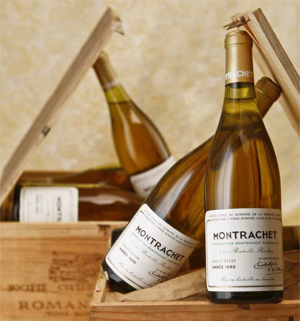
1990 DRC Montrachet
The 1985 DRC Montrachet quickly shrugged the 1990 aside, and ultimately knocked the 1990 out of outstanding class, so to speak. Its palate was superb, hitting all the right spots and still ascending. Cocoa butter and mixed nuts were accentuated by sprinkles of yeast and earth, and a full-bodied, buttery skin encased it all well. When this wine hits, it hits hard (96+).
| 1. | 1985 Tollot-Beaut Corton Charlemagne | (93) |
| 2. | 1989 Rousseau Chambertin Clos de Beze | (93M) |
| 3. | 1986 Henri Jayer Echezeaux | (94) |
| 4. | 1971 Unknown Morey St. Denis | (92) |
| 5. | 1979 Mongeard-Mugneret Grands Echezeaux | (87) |
| 6. | 1978 DRC Romanee St. Vivant | (96) |
| 7. | 2001 DRC La Tache | (95) |
| 8. | 1978 Pousse d’Or Volnay Clos d’Audignac | 92) |
| 9. | 1979 Pousse d’Or Volnay Clos d’Audignac | 93) |
| 10. | 1964 Vogue Bonnes Mares | (94) |
| 11. | 1985 Mongeard-Mugneret Richebourg | (95) |
| 12. | 2002 Mugnier Musigny | (96) |
| 13. | 1964 Drouhin Chambolle Musigny Les Amoureuses | (97M) |
| 14. | 1983 Clair-Dau Bonnes Mares | (94) |
Got all that? I have some briefer notes for the rest of this report, and memory serves me well for some, though not all, of the wines. The Tollot-Beaut is a rare bird, a cherished white amongst many Chardonnay collectors. It was nice to try one for the first time in a while; it didn’t disappoint. The Rousseau was great for 1989, but still 1989. I like the vintage, but do not love it, and while there is strength and character in this year, there is always game and bread to go with its thick, slight out-of-step personality. Jayer is a master of the ‘off’ vintages, and this 1986 proved once again why. It was as good as 1986 gets, showing that deep purple fruit that only Jayer can extract, with light beef and solid acid, a trait of this screechy but sometimes exhilarating vintage. The Morey wasn’t unknown at the time it was served, I just didn’t write it down and can’t remember who the heck it was lol. It was still 1971, and that is always a good thing, and not because it was my birth year. The Mongeard-Mugneret was sweet and musky in its nose with a ‘touch of ashtray,’ but the palate was sour and more disappointing. The producer would later rebound with a ravishing Richebourg, which was seductive and classic. I know I am going out of order now, but I figure it is easier to keep each producer together at this point. The ’85 Richebourg abounded with red citrus, and it kept getting more beautiful as the glass wore on.
Ok, maybe it will be three or four paragraphs to wrap this up! Maybe I should write this abridged way in general, then I can actually get more than 5% of what I taste into articles. I am getting a bunch more into twitter, though. I highly recommend following me lol. Back to the wines… DRC gave a double dose, beginning with a fantastic 1978 RSV. This was as good as 1978 gets for DRC, which is a vintage that has a love-hate relationship with many collectors. This bottle was great, delivering all of the autumnal and bouillon greatness that one would want in a mature DRC, along with great acidity and zip, with long, earthy flavors that felt like they had 1000 years of history behind them. The ’01 La Tache was summed up in my notes as ‘yeah.’ Makes perfect sense. A pair of Pousse d’Ors were no match for the double dose of DRC, but they attempted admirably. Surprisingly, the 1979 outshowed the 1978, showing a fresher and more vibrant personality, and great citrus.
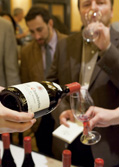
Another La Paulee Warmup
There were two wines from 1964 in the last four that I sampled, and the Vogue came first, delivering wheat and cereal. It was quite tasty, showing browned, autumnal flavors, ‘delicate and expressive,’ as one put it. The Drouhin was served out of magnum, and became the wild card that won the Series. This was spectacular wine, everything in balance, including the power and rock n’ roll of ’64 with the class and style of Amoureuses. I would expect nothing less from the vineyard named after two female lovers.
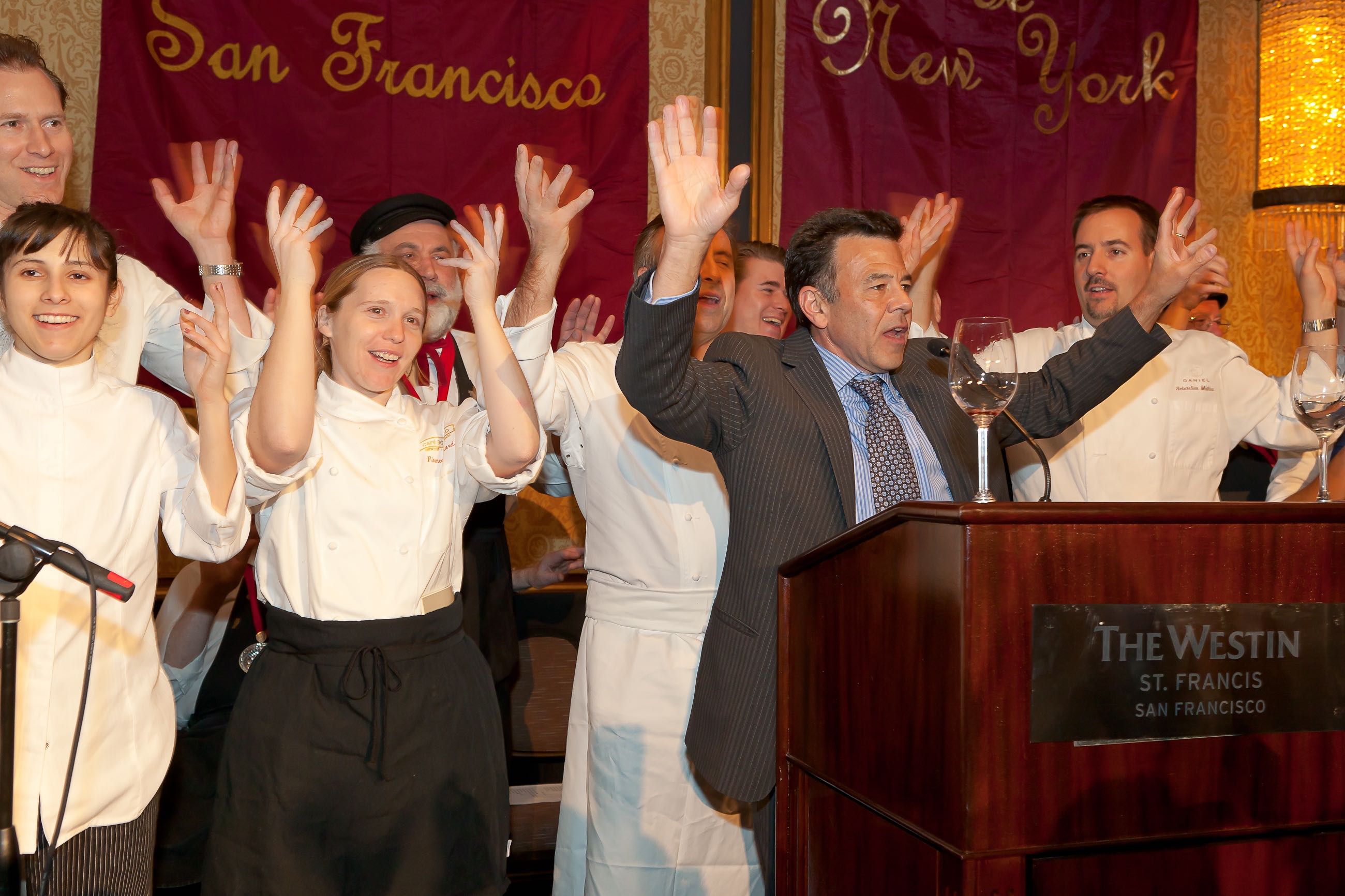
Put the Burgundy in the Bag and Nobody Gets Hurt
The Mugnier came pretty close to the Amoureuses, and were it not for its youth, it would be right there with the Drouhin. It was amazingly forward, almost shockingly so, but so good accordingly. Sumptuous and rich summed up this delicious, amazing wine. Was it too good too soon is the only negative thought that crossed my mind. The Clair-Dau, whose vineyards are now all owned by Louis Jadot, was another excellent 1983. I have had good luck with this once-heralded vintage, which I often find delicious to drink. Menthol was the most prevalent characteristic, to go with its open and autumnal fruit.
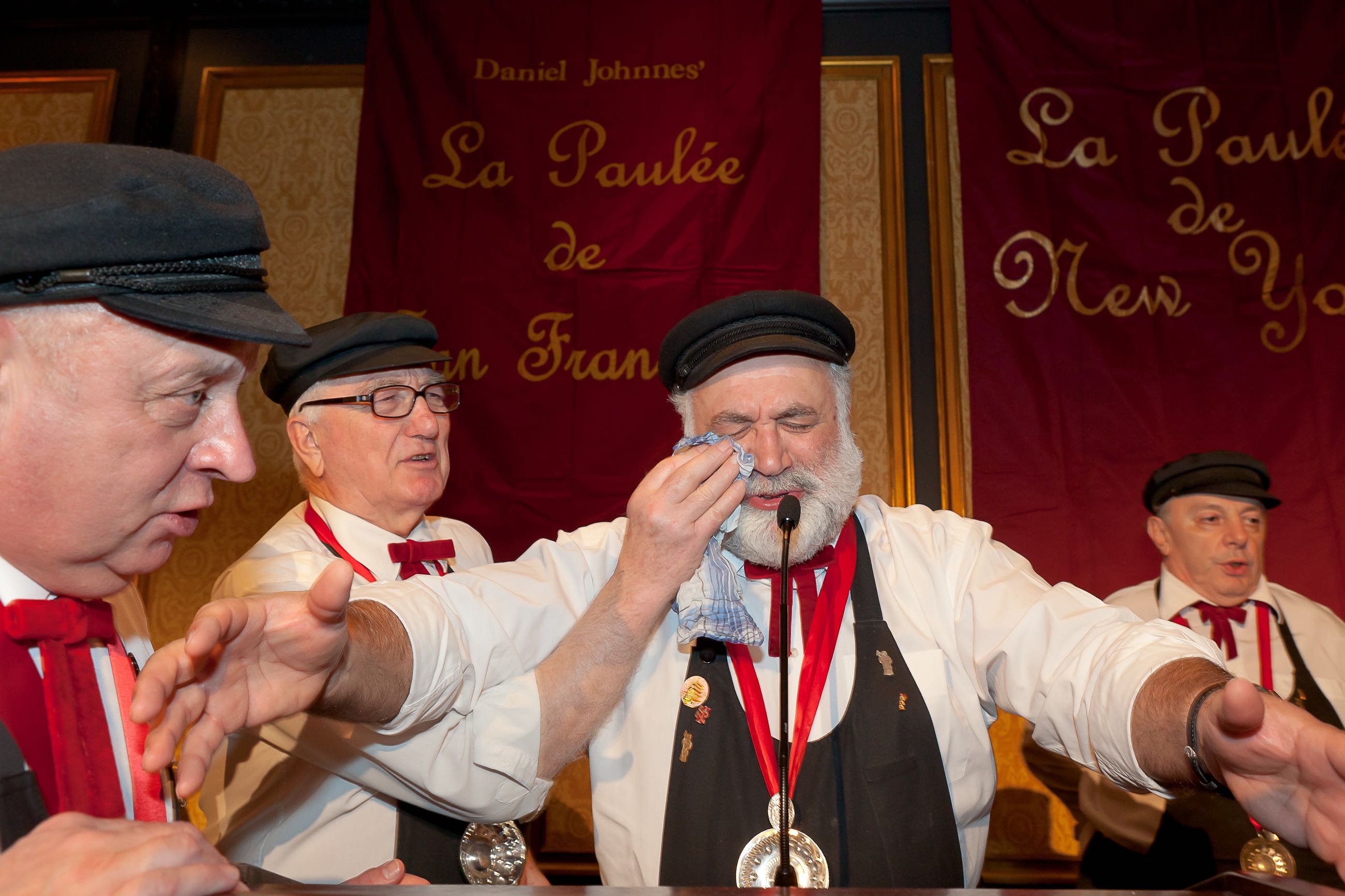
Sometimes Those Are the Best Nights of All
And that was night one of La Paulee. It wasn’t officially on the schedule, but sometimes those are the best nights of all.
In Vino Veritas,
JK
